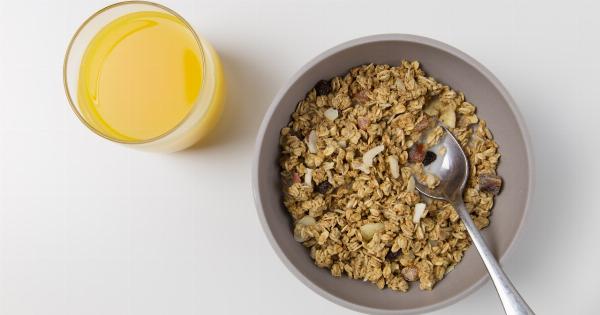Thyroidectomy is a surgical procedure recommended for patients suffering from a range of thyroid conditions.
This procedure involves the removal of all or part of the thyroid gland, which is responsible for producing hormones that regulate metabolism, growth, and development.
Understanding the Thyroid Gland
The thyroid gland is a small, butterfly-shaped organ located in the front of the neck. It plays a crucial role in the body’s overall well-being by producing thyroid hormones – triiodothyronine (T3) and thyroxine (T4).
These hormones are essential for regulating metabolism, body temperature, heart rate, and growth.
Thyroid conditions such as hyperthyroidism (overactive thyroid), hypothyroidism (underactive thyroid), thyroid nodules, and thyroid cancer can significantly impact a person’s health.
In cases where conservative treatment options like medication fail to provide relief or the condition worsens, a thyroidectomy may be advised.
The Thyroidectomy Procedure
A thyroidectomy is performed by a skilled surgeon under general anesthesia. There are three main types of thyroidectomy:.
1. Total Thyroidectomy
In a total thyroidectomy, the entire thyroid gland is removed. This is typically recommended for patients with thyroid cancer, severe hyperthyroidism, or a significantly enlarged thyroid gland.
2. Partial Thyroidectomy
Also known as a lobectomy, a partial thyroidectomy involves the removal of one lobe of the thyroid gland. This procedure is usually recommended when only one lobe is affected by nodules or other thyroid conditions.
3. Subtotal Thyroidectomy
A subtotal thyroidectomy involves the removal of a large portion of the thyroid gland, leaving behind a small portion to maintain thyroid function. This procedure is rarely performed today due to the risk of recurrence of thyroid conditions.
The choice of the type of thyroidectomy depends on the individual patient’s condition and the recommendations of the surgeon.
Recovery Process
After a thyroidectomy, patients usually spend one night in the hospital for observation. Pain medication and other necessary medications are prescribed to manage any discomfort.
The recovery process varies from person to person but generally involves the following:.
1. Healing of the Incision
The incision made during thyroidectomy surgery usually heals within a week or two. Stitches or adhesive strips may be used to close the incision, which can be removed during a follow-up appointment.
2. Hormone Replacement Therapy
Since the thyroid gland is responsible for producing hormones, patients who undergo a total or subtotal thyroidectomy will require lifelong hormone replacement therapy.
This involves taking synthetic thyroid hormones that help regulate the body’s metabolism and maintain overall health.
3. Resuming Normal Activities
Most patients can resume their regular activities within a couple of weeks after surgery. However, strenuous physical activities should be avoided for a few weeks to prevent any strain on the neck region.
Low Residue Diet and its Benefits
During the recovery process, following a low residue diet is often recommended to minimize discomfort and facilitate healing.
A low residue diet consists of easily digestible foods that are gentle on the digestive system and produce smaller, soft stools. This is particularly beneficial as it reduces the strain on the digestive system and allows it to heal more efficiently.
Some of the commonly recommended foods in a low residue diet include:.
1. Fiber-Rich Fruits and Vegetables
Fruits like bananas, melons, and cooked vegetables without the skin or seeds are ideal choices. These provide essential vitamins and minerals without causing irritation to the digestive system.
2. Lean Protein
Opting for lean protein sources such as skinless poultry, fish, or tofu can provide necessary nutrients without adding extra strain on the digestive system.
3. Refined Grains
Products made from refined grains like white bread, white rice, and pasta are easier to digest compared to whole grains. These can be included in a low residue diet to provide energy without causing discomfort.
4. Low-Fat Dairy Products
Choosing low-fat or fat-free dairy products like milk, yogurt, and cheese helps fulfill the body’s calcium requirements without contributing to excess fat or digestive issues.
5. Avoiding High-Fiber Foods
During the recovery phase, it is crucial to avoid high-fiber foods like whole grains, raw fruits, vegetables, beans, and legumes as they can be harder to digest and may cause discomfort or inflammation.
Avoiding Potential Complications
While a thyroidectomy is generally a safe procedure, it is essential to be aware of potential complications and take necessary precautions. Some potential complications include:.
1. Hypothyroidism
When the entire thyroid gland is removed, it can lead to hypothyroidism. This condition is managed by hormone replacement therapy and routine monitoring of thyroid hormone levels.
2. Damage to Adjacent Structures
During the surgery, there is a slight risk of damage to the adjacent structures like the parathyroid glands and recurrent laryngeal nerves. This could lead to temporary or permanent voice changes or calcium imbalance.
However, experienced surgeons take the utmost care to minimize such risks.
3. Infection
As with any surgical procedure, there is a risk of infection. Following proper post-operative care, including keeping the incision area clean and dry, can help prevent infections.
It is essential to discuss the potential risks and complications with the surgeon before undergoing a thyroidectomy.
Conclusion
A thyroidectomy can offer a breath of fresh air for individuals struggling with various thyroid conditions.
While the surgery and recovery process may seem daunting, following the recommendations of experienced healthcare professionals can lead to a smooth and successful recovery. Additionally, adhering to a low residue diet during the recovery phase can significantly contribute to the healing process by providing easily digestible nutrition.
By understanding the procedure, following post-operative guidelines, and seeking support when needed, individuals can embark on a new journey towards improved thyroid health and overall well-being.






























